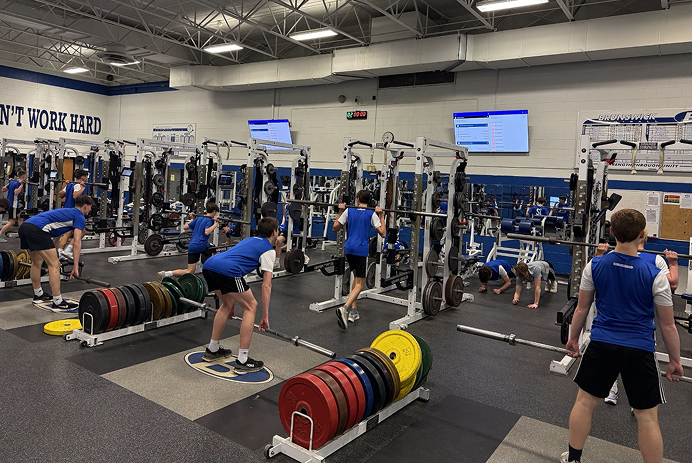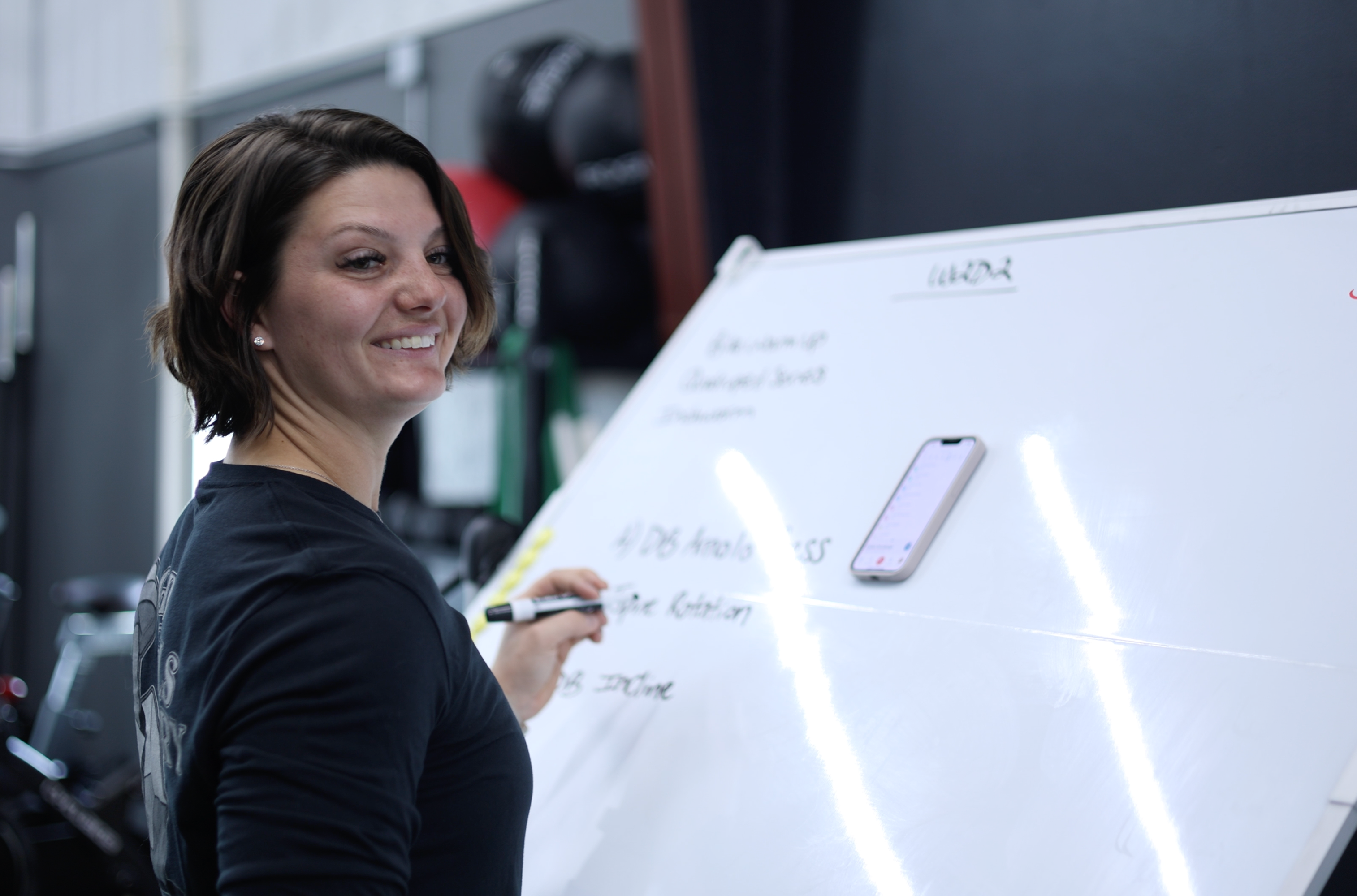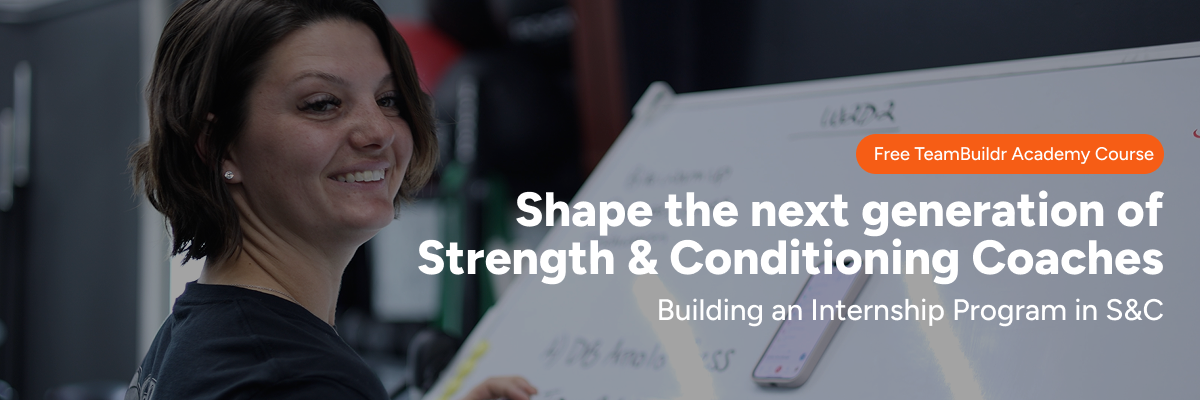How are we being evaluated?: Illustrating the Real Value of S&C Training
When stepping into a new role in any industry, a common question from a new hire or applicant might be something along the lines of “what would you qualify as a successful person in this position?” or “what skills would a good practitioner have in this role?”. At the heart of those questions is a simple one: “How will I be evaluated in this position?”
In the strength and conditioning profession, this often goes unaddressed; it's vaguely defined at best. Whether it’s how head S&C coaches evaluate their own staff or how we’re assessed by administrators, sport coaches, or athletes, the criteria can be unclear, inconsistent, or overly subjective.
Some schools (in my experience) may give out yearly student athlete surveys on a Likert scale with general questions to answer about ALL support staff, with questions like:
- (Insert support staff) understands the demands of my sport
- (Insert support staff) is readily available if I have questions or concerns
- Overall, I am satisfied with (insert support staff)
Even if given more performance-specific questions, is asking only athletes for this graded feedback the best route for evaluating our impact? While there is ABSOLUTELY merit to a measurement of athlete buy-in and trust, athletes will inherently hold some sort of bias towards their S&C Coach. Whether that bias is good or bad, there’s a loss of reliability in those graded responses. Just because an athlete likes you doesn’t necessarily mean you’re a good or EFFECTIVE practitioner, and vice versa.
Alternatively, is asking only coaches or administrators for general feedback the best route? Like athlete feedback, it absolutely MATTERS, but it can still miss the boat on showcasing our actual effectiveness. A better plan forward may consist of a type of “self-audit” as a department that we can use to illustrate our efficacy. This could also be presented to athletes, coaches, or administration in different ways depending on the desired outcomes (team progress/buy-in, staff compensation/promotion, or identifying potential areas of improvement).
A Smarter Model: Combine Subjective Feedback with Objective Metrics
Rather than relying solely on perception-based feedback, a more sustainable and comprehensive approach would include:
- Internal self-audits
- Agreed-upon outcome categories
- Objective performance markers
By creating a more structured evaluation process, we not only gain clarity within our own departments but can also better present our value to the broader athletic department — especially when it comes to things like athlete development, staff promotions, budgeting, and long-term planning.
Subjective opinions still matter — relationships are a big part of what we do — but they shouldn't be the only measure of success. When we replace or supplement subjectivity with measurable, pre-established indicators, our evaluations become more transparent and defensible.
Ask the Right Questions First
Before building a framework, we need to reflect on a few essential questions:
- How do we define “success” in our roles?
- Can we measure that success?
- If yes, how?
- If not, what resources would allow us to do so?
- How can we present that success in a way that effectively advocates for our value — individually and as a department?
These are the kinds of conversations we should be having with our supervisors, sport coaches, and colleagues. While different people may provide different answers, those diverse perspectives can help refine our approach and ultimately lead to greater clarity and alignment across the board.
If we have a shared understanding of what success looks like — and a method to quantify it — we have a more objective, consistent roadmap for both evaluation and improvement.
Clarifying Our Intended Results
Next, we need to identify our intended results. This is where we absolutely need to meet with coaches and supervisors to find common ground on what makes the most sense for us to be evaluated on.
Many items here may be very obvious for your respective sport(s), but the idea of having these items agreed upon every year leaves out room for gray areas in what’s important to all parties.
Here are common, realistic categories of intended results for most S&C Coaches:
- Strength and Power Improvements
Again, sounds obvious, but what areas of strength or power in particular? What tests can show objective progress here? CMJ heights? Periodic Nordbord numbers for field sport players? Overcoming isometric tests on force plates? General rep max weights on primary movements?
- Fitness Improvements
A little cliché, but how much more prepared are our athletes for the demands of sport? Have Yoyo scores improved? Did a mile time go down? Is there a better magnitude of HR decline in a submax heart rate recovery test?
- Player Availability
Of course, injuries are extremely multifactorial. While other parties (coaches, trainers, dieticians, etc.) play somewhat of a role in all areas like strength and fitness, they likely play a more significant role in this one, thus taking away some of the control we can have on these outcomes. We need to be careful about how we approach this, but if there are avenues to showcase a reduction in soft tissue injuries in a given season, why not try to weaponize that on our behalf?
- Athlete relationships
Not to sound self-contradictory, but there IS a place for things like end-of-year athlete surveys. They just don’t paint the full picture.
- Successful collaboration
A hard one to quantify, but how well do we work with our coaches and other support staff members? Were there weekly/monthly performance team meetings? Were there agreed-upon systems in long-term rehab cases?
- Success in extracurricular or administrative responsibilities
While these areas still may not be completely all-encompassing, they do identify many of the main buckets we try to fill in our profession. Given the opportunity to preemptively establish what is important in each of these categories with key stakeholders, we have a better format at the end of each year to audit ourselves and our staff’s values. As an industry of people who typically hold ourselves to high standards, it also helps us identify what the lowest-hanging fruit may be to improve in subsequent years.
Here are sample lists of areas to be considered in each category:
- Strength and Power Improvements
- Pre-identified areas of importance (examples)
- CMJ Jump Height
- CMJ mRSI
- Hamstring Strength
- Estimated 1RMs of primary movements
- Hip ABD/ADD
- Max velocity / top end speed
- Pre-identified areas of importance (examples)
- Fitness Improvements
- Pre-identified areas of importance (examples)
- Yoyo IR1 scores
- Man-U scores
- Sub-max HRR test
- Pre-identified areas of importance (examples)
- Player availability
- How many “serious” injuries occurred throughout the year (2 weeks or more time loss)
- Contact?
- Non-contact?
- Moderate? (7-14 days)
- Acute (1-7 days)
- How many “serious” injuries occurred throughout the year (2 weeks or more time loss)
- Athlete relationships
- End-of-year survey (Likert scale)
- I feel as if my S&C coach understands the demands of my sport
- I feel as if my S&C coach elevated my ability to be successful in my sport
- My S&C coach provides effective instruction and supervision, leading to a safe training environment
- Overall, I am satisfied with my S&C coach
- End-of-year survey (Likert scale)
- Successful collaborations
- Pre-identified ways of measuring (examples)
- Periodic performance team meetings (with whichever relevant stakeholders make the most sense)
- Quantity, outcomes
- Survey to coaching staff or admin
- Any case studies involving injured athletes
- Any case studies involving athletes with major dietary restrictions or eating disorders
- Any case studies involving athletes struggling with either mental health or performance psychology-related issues
- Periodic performance team meetings (with whichever relevant stakeholders make the most sense)
- Pre-identified ways of measuring (examples)
- Success in extracurricular or administrative responsibilities
- Examples (not an exhaustive list by any means)
- Intern/GA/Fellow oversight
- Inventory and acquisition
- Weightroom maintenance (cleaning, troubleshooting, broken equipment)
- Operating budgets
- Hiring practices
- Operating procedures
- Staff events/community engagement
- Social media
- Speaking engagements or published content
- Examples (not an exhaustive list by any means)
These lists could look very different with one coaching staff versus another, but the thematic elements of each list (the 6 overarching intended results) should be universal.
Closing Thoughts
If we want to escape the running jokes of our value being isolated to the “get-back” coach or just the hype man (not that it may not be important), we should use these areas to build a case each season for how much value we are providing to our teams, our staff, and organization.
To elevate our profession — and justify continued investment in it — we need to take ownership of how our impact is measured. That starts with intentional conversations, clear definitions of success, and a willingness to track meaningful data over time. By building and presenting a more complete picture of our role, we’re not only advocating for ourselves but raising the standard for our field as a whole.
Subscribe to our blog
Subscribe to receive the latest blog posts to your inbox every week.
Related posts

Scaling Your Side Hustle Part III

Raising the Bar for Strength & Conditioning Internships
%201%20(1).png)
